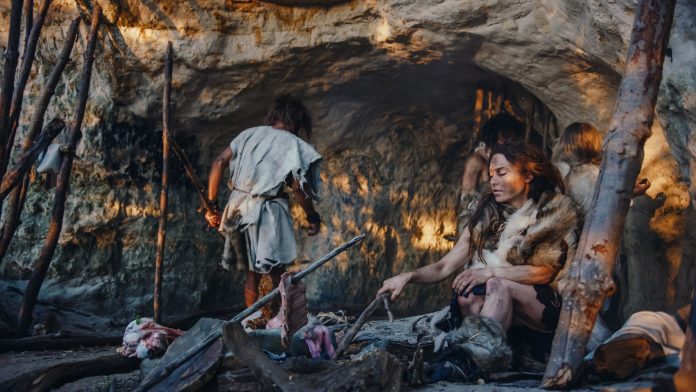Recent findings challenge prehistoric gender roles that have long portrayed men as hunters and women as gatherers but new research destroys this concept
Professor Sarah Lacy from the University of Delaware and her colleague Cara Ocobock from the University of Notre Dame have conducted groundbreaking research that redefines our understanding of history and prehistoric gender roles
Challenging prehistoric gender roles
Lacy and Ocobock delved into the Paleolithic era, from approximately 2.5 million to 12,000 years ago.
Their investigation aimed to dissect the prevalent notion that distinct roles were assigned to each gender during this epoch. By scrutinising archaeological evidence and literature, the researchers found minimal support for this hypothesis, suggesting that these prehistoric gender roles might not be as rigid as once believed.
Anatomy meets history
Contrary to the widely held belief that women’s anatomy prevented them from hunting, Lacy and Ocobock demonstrated that women were physically capable of hunting and might have actively participated in it.
Their investigation reveals a lack of concrete evidence supporting women’s exclusion from hunting during this era.
An equal past: Gender equality
The researchers discovered evidence of gender equality in various aspects of prehistoric life, including tools, diets, art, burials, and anatomy. They argue that historical artefacts do not offer clear gender distinctions; hence, the idea that males exclusively engage in activities like flintknapping does not hold.
Estrogen’s vital role
Lacy and Ocobock also explored the significance of estrogen, a hormone predominantly found in women, as a critical factor enabling women’s participation in hunting. Estrogen’s effects on fat metabolism, muscle endurance, and prevention of muscle breakdown made it a crucial asset for ancient hunters, challenging conventional wisdom about gender roles.
Revisiting “Man the Hunter”
The idea of men as hunters and women as gatherers gained prominence in 1968 with the publication of “Man the Hunter,” which assumed all hunters were male. Lacy emphasises the gender bias in early anthropological research and its lasting influence on academia and popular culture.
A paradigm shift on gender roles
This groundbreaking research not only sheds light on the lives of prehistoric women but also paves the way for a new default approach to research. Lacy’s work suggests that both genders participated in subsistence gathering and hunting for millions of years, reshaping our understanding of prehistoric gender roles.
“We were a very egalitarian species for millions of years in many ways,” Lacy concludes. The conventional portrayal of prehistoric gender roles is transforming, challenging long-held assumptions and opening new avenues for research into the lives of our ancient ancestors.











